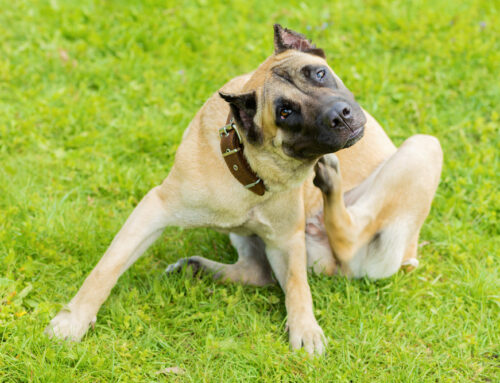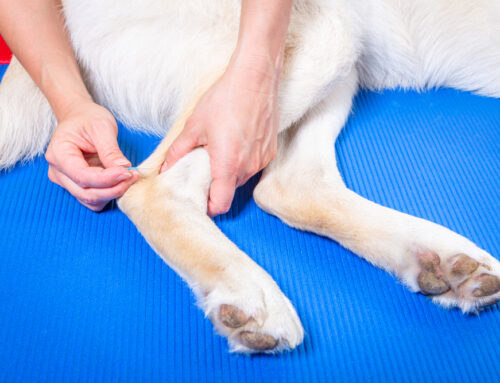At Pinedale Animal Hospital, we know that surgery can be an emotional experience—not just for your pet, but for you as well. One of the most common concerns we hear is: How much pain will my pet be in afterward? The good news is, with modern veterinary medicine, we can manage pain effectively—and support your pet’s recovery every step of the way.
Whether your pet is undergoing a routine spay or a more complex procedure, our team takes a proactive, multimodal approach to pain management that blends traditional medications with integrative therapies like laser therapy and acupuncture. The goal? A smoother recovery and a more comfortable, confident pet.
Why Pain Management Matters
Pain isn’t just unpleasant—it’s biologically disruptive. Unmanaged post-surgical pain can:
- Slow down the healing process
- Increase the risk of complications like infection
- Cause behavioral changes such as anxiety or aggression
- Lead to long-term mobility issues and reduced quality of life
That’s why we prioritize both preventive and responsive pain control strategies—before, during, and after surgery.
Recognizing Post-Surgical Pain in Pets
Pain can be subtle, especially in animals who instinctively hide discomfort. Be on the lookout for:
- Decreased appetite or reluctance to move
- Excessive panting, whining, or vocalization
- Hiding, clinginess, or sudden aggression
- Guarding or licking at the surgical site
If you notice any of these signs at home, don’t wait—call us so we can adjust your pet’s care plan.
How We Diagnose and Monitor Pain
Pain is not always obvious, which is why our veterinarians:
- Use pain scoring systems tailored to species and procedure type
- Perform gentle palpation to assess sensitivity
- Rule out complications like infection or seroma with follow-up diagnostics if needed
Your observations at home are also incredibly valuable—especially when paired with videos or a symptom log.
Our Approach to Post-Surgical Pain Relief
We customize every post-operative plan based on your pet’s age, procedure, health history, and temperament. Our toolkit includes:
Pharmaceutical Options
- Opioids for managing acute, moderate-to-severe pain
- NSAIDs for reducing inflammation and soreness
- Local anesthetics (such as nerve blocks) for targeted relief
- Adjunct therapies like gabapentin or amantadine for nerve-related pain
- Laser Therapy
This non-invasive, painless treatment uses targeted light energy to reduce inflammation, improve circulation, and stimulate cell regeneration. It’s especially effective at reducing swelling around surgical sites and accelerating tissue repair—helping pets heal faster and with less discomfort.
→ Learn more: Laser Therapy – AAHA
- Acupuncture
Backed by both tradition and clinical research, veterinary acupuncture involves placing ultra-fine needles at specific points to stimulate nerve pathways and release the body’s natural pain-relieving chemicals. It can be particularly beneficial in managing nerve pain, calming anxiety, and restoring overall balance after surgery.
→ Learn more: What is Acupuncture – AAVA
By combining these modalities with medication and careful monitoring, we create a layered pain management strategy that gives your pet the best chance at a smooth, speedy recovery.
Rehabilitation & Environmental Modifications
- Physical rehabilitation exercises such as hydrotherapy and passive range of motion
→ What is Veterinary Physical Rehabilitation – AAHA
- Ramps, padded bedding, or lift harnesses to support comfort at home
What If Pain Goes Untreated?
Left unmanaged, post-surgical pain can lead to:
- Chronic pain syndromes
- Delayed healing and decreased immune function
- Self-trauma to surgical sites
- Long-term behavioral challenges
Prompt intervention helps prevent these outcomes—and preserves your pet’s quality of life.
At-Home Support: What You Can Do
Your role in your pet’s recovery is just as important as ours. Here’s how to help at home:
- Give medications exactly as prescribed. If you’re having trouble, ask us about flavored options or pill pockets.
- Limit movement. Crate rest, short leash walks, or playpen time may be needed.
→ How to Survive Crate Rest – Preventive Vet
- Monitor the incision. Check for redness, swelling, or discharge. Use an e-collar if needed.
- Provide mental stimulation. Puzzle feeders and brain games can ease boredom during recovery.
Preparing for a Follow-Up Visit
To get the most from your next appointment:
- Note any changes in behavior or appetite
- Bring a list of current medications and dosages
- Take photos or videos of anything you’re concerned about
Questions to consider asking:
- What’s normal vs. abnormal pain behavior?
- How long should my pet stay on pain meds?
- Could my pet benefit from laser therapy or acupuncture?

For more background, see Understanding Anesthesia for Dogs – AKC.
FAQs: Post-Surgical Pain in Pets
Q: My pet seems tired after surgery. Is that pain or anesthesia?
A: Drowsiness is normal for the first 24 hours, but persistent lethargy should be evaluated.
Q: Can I give over-the-counter meds at home?
A: No—some human medications are toxic to pets. Always consult us first.
Q: Is it normal if my pet doesn’t eat the day after surgery?
A: It can be—but if your pet hasn’t eaten after 24 hours, let us know.
Your Partner in Post-Surgical Recovery
At Pinedale Animal Hospital, our mission is to ease your worries and give your pet the best possible recovery experience. Whether it’s your pet’s first procedure or one of many, we’re here to guide you with clarity, compassion, and medical excellence.
If you have questions or need follow-up care, contact us today.
Your pet deserves to feel better, faster—and we’re here to make that happen.








Leave A Comment